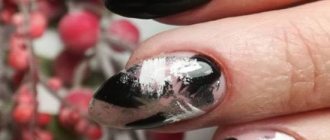The decorative beauty of lilies is appreciated by gardeners and florists. The exquisite “flower of French kings” is majestic without pomp, graceful without pretentiousness, romantic and strict at the same time. The simplest compositions with this popular garden perennial look luxurious. This is why bouquets of lilies, collected by yourself, are so impressive - they do not require complex design, accessible only to professionals.
The flower is most popular in wedding floristry, providing worthy competition to its main rival – the rose. If we turn to floral symbolism, it turns out that lilies are more appropriate in a bride’s bouquet, since they mean innocence and purity, and are also associated with fertility. Although not everything is so simple here.
Rich floral language
Wild lilies, from which over 110 modern species descend, were only snow-white, without any shades. This is confirmed by the ancient Gaulish name “li-li”, meaning “white-white”. It was these flowers that were associated with the divine principle and the highest morality.
Varietal lilies in all their colorful diversity appeared much later. And their symbolism is slightly different:
- orange color means wealth, flirtatious character, some contradictory nature;
- yellow – lightness and cheerfulness;
- coral is associated with the greatness of the soul, grandiose plans and passionate feelings;
- blue symbolizes nobility;
- pink – tenderness and femininity;
- brindle color attracts abundance and prosperity.
The golden lily, endemic to Japan, is considered the embodiment of perfection. Its cost is high compared to other varieties. Therefore, in a bouquet, an elite flower also speaks of a craving for luxury, as well as for everything unusual.
Lilies in a bouquet: pros and cons
The “Royal Flower” was at the peak of fashion a decade ago and has not lost its position since then. It has many advantages over other iconic representatives of the flora: orchids, ranunculus, peonies or eustoma.
- Persistence. Cut specimens remain fresh for 3 to 5 days, which allows you to fully enjoy their beauty.
- Varietal diversity. There are more than 500 shades of lilies, which gives endless scope for the imagination of designers and florists.
- Good compatibility. Harmonizes with many ornamental plants, exceptions are rare.
- Long flowering. Some species can be found in the garden from May to September. And in flower shops, the availability of elegant beauties does not depend on the season and their prices hardly change.
- Versatility. A beautiful bouquet of lilies can be of any style and shape.
- Healing properties. The aroma of some varieties is considered medicinal; it effectively eliminates depression and lifts the mood.
There are also some negative aspects. The fragrant plant, on the one hand, heals, but on the other hand, it can cause headaches and spasms in people sensitive to strong odors. For bouquets, it is recommended to choose varieties with a delicate aroma, without pronounced spicy notes.
Another unpleasant “touch” can be lily pollen. For humans, contact with it will only result in bright, difficult-to-remove stains on clothing, but pets can become very ill and even die. Cats are especially vulnerable in this regard; “washing” their fur coat of pollen that has fallen on it ends in acute renal failure.
Floral arrangements with the “royal flower” should be kept as far as possible from four-legged pets in order to avoid sad consequences. It is even better to remove the anthers of the stamens from freshly cut plants.
The most decorative varieties
Not all types of luxurious perennials are equally good in flower arrangements. Among all the diversity, experts recommend choosing Asian and Oriental hybrids. The former are distinguished by their bright, exotic color and are almost odorless. The second ones are larger, with a refined shape and a rich, sweetish aroma. Also of interest are long-flowered hybrids with elongated cups resembling a gramophone.
Marlene is an Asian variety with a soft pink color. Ideal in wedding bouquets or interior compositions. The aroma is subtle and fresh. The petals look like Japanese porcelain.
Annamarie's Dream - snow-white, less often cream, double flowers with dark burgundy stamens. Perfect for compositions with different types of plants.
Black Out is a dark red variety with dense glossy petals. Very beautiful in bouquets for special occasions, such as anniversaries or birthdays.
Lollуpop is a favorite of florists. Large white buds with raspberry tips are impressive and especially popular with brides.
Lovely Girl is the most beautiful oriental hybrid. Cream flowers with a yellow center and golden specks do not require additional decoration. They are used to make mono-bouquets, including wedding ones.
Marlene
Annamarie's Dream
Black Out
Lollуpop
Lovely Girl
Bouquet of lilies
Ways to Get Rid of Pollen and Odor
The aroma of lilies can drive you crazy, especially those who don’t like it. It's even worse when you're allergic to pollen. These points must be taken into account when choosing a lily as the main flower in the design of an anniversary or wedding celebration. For large floor structures and tabletop compositions, varieties with a delicate scent are often chosen. Plus, the flowers are additionally subjected to the following procedure:
- Use small scissors to trim pollen-bearing plants. First, put a bag on the stamens or isolate them with paper. This is done so that when cutting the pollen does not scatter on the sepals. It has a slight viscosity, so removing it from the petals is not so easy. But if the pollen has scattered, you should immediately blow it off or brush it off with a long-haired brush.
- If for decorative reasons it is impossible to remove the stamens, the accents will be lost, then they are sprayed with transparent varnish. I repeat the procedure at least twice. So that the pollen sticks securely and does not fall inside the bud or on the outfit.
Note: removing the stamens, in addition to reducing the aroma and getting rid of pollen, will extend the life of the cut flower.
Some terry varieties of Asian and Oriental hybrids are devoid of aroma and pollen. Their flower has not 6 petals, but two 2-4 times more. The most lush terry varieties have 24 petals. Breeders have bred hybrids with little or no odor.
These are longoflorums, among them are:
- pink-lilac Fangio;
- burgundy-purple Samur;
- bright scarlet Vinilla;
- white Navona, Anna, Bestsseler, Courier.
Royal luxury wedding bouquet
Flowers are the best decoration for any bride. It is not surprising that every girl chooses bouquet arrangements for the happiest day of her life with special care. But if she prefers lilies, there will be much less hassle with the main wedding accessory. What should you pay attention to first?
- Flowers and the dress should be in harmony with each other, sharp contrasts should be avoided. A bright, lavishly decorated outfit involves the use of a mono-bouquet: pure white or light pastel shades.
Tip: to make the floral accessory look festive, you can sprinkle it with glitter varnish and decorate it with rhinestones.
- The shape of the “living decoration” depends on the height and figure of the bride. For tall girls, cascading or “drop” type compositions are suitable, as well as the sharply fashionable “ball”, which is worn on a chain like a handbag. Newlyweds of average height should pay attention to the hemisphere and Biedermeier, and petite beauties should pay attention to glamelia.
- A variety of greenery should be added to a mono-bridal bouquet of lilies, but artificial accessories - ribbons, bows, jewelry - should be avoided.
Combination with other plants
The most common and popular is a wedding bouquet of lilies and pink buds - plain or in pastel colors. In second place is the combination with small chrysanthemums, creating an interesting play of textures and volumes. On the third – an exotic combination with orchids, balancing on the verge of aristocratic whim and ridiculous bad taste.
A “duet” with gerberas can be called neutral, fresh and romantic with freesias, daisies and hydrangeas. You can add a “cloud” of aerial gypsophila to any composition. Since lily petals have a pointed shape, their “partners” in the bouquet should be round, with soft but lush outlines.
For greenery, you should pay attention to the leaves of irises or peonies, asparagus and fern.
Florists strongly advise avoiding “tandem” with carnations, daisies, poppies and cornflowers.
Armed with some knowledge, you can try to make a wedding bouquet of lilies with your own hands, especially for those craftswomen who are going to get married soon. However, it is not at all necessary to create such beauty only for yourself; it is worth sharing with friends or even having it made to order.
A successful combination of lilies of different shades with other plants and flowers
Lilies can be included in flower arrangements both as a solo element and as an additional background. They are combined with different plants. The choice should be made based on the desired result, but the main thing is that they are in harmony with each other in shape and shade.
A monobouquet of these charming inflorescences can be complemented with green leaves of irises, fern, asparagus or contrasting flowers. The most successful combination for a wedding is considered to be a combination of white lilies and roses in pastel shades.
Round composition in a porta bouquet
Before you start assembling, lilies should be immersed in a container of cold water for 2 hours. This way they will stay fresh longer.
We will need:
- porta bouquet holder;
- oasis (floral sponge);
- satin ribbon;
- double-sided tape, glue gun, sharp knife, wire.
And, of course, “live” material.
- First, let’s lower the oasis into water so that it is well hydrated, because it is this simple device that creates a comfortable environment for fresh plants. When the sponge darkens and sinks to the bottom, it is removed and placed in a porta-bouquet holder, secured with wire. The leg of the plastic stand is stuffed with paper towels to prevent water from leaking out.
- Next, you should disguise the “base” with large decorative leaves, making the so-called “arrangement skirt”. We attach the natural props to special floral glue.
- We cut the lily stems to 6 cm, otherwise the material will fall out of the porta bouquet under its own weight. We arrange the flowers radially, starting from the bottom tier. We monitor the shape of the bouquet - it should be round so that individual elements do not stand out from the overall composition. We use both fully blossomed and closed buds, alternating them with each other.
The stems at the point of contact with the sponge can be filled with glue for reliability.
- We fill the space between the main elements with gypsophila and greenery, or small half-blooming roses (chrysanthemums). For reliability, we braid the composition on top with the thinnest wire-broth.
- We wrap the handle of the bouquet holder with double-sided tape and decorate it with a satin ribbon to match the wedding dress, lace, and rhinestones. Another option is to use natural flower stems or a bergrass substitute for decoration. This technique allows you to achieve maximum naturalness and is very popular among florists.
How to make a wedding bouquet with your own hands - step-by-step instructions
Before you start work, you need to stock up on all the necessary materials. The main component is fresh flowers.
To work you will also need:
- porta bouquet holder;
- floral sponge;
- satin ribbon;
- glue gun;
- scissors;
- pruner;
- decorations for the composition.
Design selection
The shape of the bouquet is selected depending on the image and parameters of the bride’s appearance. Round - consists of different colors that are fixed on a round base. This bouquet is suitable for fluffy dresses of any length.
Hemispherical - round on top, and from the side it looks like a hemisphere. It will highlight the beauty of short brides in magnificent dresses.
Spherical - designed in the form of a ball, which is attached to a tape. It is worn on the wrist and is suitable for tall girls wearing fitted dresses.
Cascading - several elements fall from the base in the form of a waterfall. This addition to the image is suitable for thin girls of medium and tall height.
Glamelia is made by gluing together many individual petals to form a single bud. This solution will suit girls of different types in fluffy dresses (short or long).
Selection of flowers for a wedding bouquet
It is better to order flowers 2 weeks before the celebration so that they can be delivered on time. Their number must be odd. For a wedding composition, you need to take lilies at the beginning of flowering. They are cut in the morning or evening so that they remain fresh longer. The bouquet can include both fully bloomed flowers and buds. To prevent them from staining clothes, it is necessary to remove the anthers in advance.
Lilymelia
A variety of glamelias - fantastic peony camellia buds, collected from many flower petals. In this case, lilies. Glamelias are by no means a floral novelty, as is commonly believed; they appeared back in the 19th century. But today they are again at the peak of wedding fashion, eclipsing the traditional “Biedermeier” and “scepter” designs.
You can make a unique masterpiece from petals with your own hands. For this you will need:
- lily buds, longiflorum varieties, 8 – 15 pcs.;
- greenery;
- decorative beads and pendants;
- satin ribbon, 1 cm wide to match the petals, similar twisted cord;
- heat gun, floral glue;
- narrow stationery tape, tape;
- knife;
- wooden stick, 30 cm long.
Carefully separate each bud, not completely separating the petals, so that you get a kind of “ribbon”. Use tape to remove any loose pollen. We collect the stamens separately into bundles and attach them to wire.
We free the half-opened bud from the stem. We strengthen it with a wire pin and wrap it with tape to a wooden base stick. We place the stamens around the bud and “take it all together with tape.”
The next layer will be “ribbons” of opened flowers. We wrap the workpiece with them and secure it with tape. We place layers of stamens and petals one by one, each time moving them down a little so that the composition resembles a “gramophone” in shape. At the end of the work, wrap the fastening area with tape several times.
We decorate the free end of the stick with a large glass bead, placing it on a wire pin and wrap the holder with a satin ribbon. We “plant” the lily leaves in a circle on floral glue, covering the junction of the lilymelia with the wooden base. Taping greens. We decorate the handle with a twisted cord, and the ends of the stamens with light transparent beads. You can replace the leaves with beautiful feathers to match the color of the petals.
The “lifespan” of a floral masterpiece is no more than 12 hours, but this is enough for the bride to have time to amaze those present and have a beautiful photo shoot.
An approximate scheme for creating lilymelia:
And here’s how luxurious the finished composition looks.
A gift from your own garden
A bouquet of garden lilies can be given for a birthday and September 1, an important family date, or just to please a loved one. It's not difficult to do, but you need to remember some rules.
Plants are cut early in the morning or in the evening in a state of half-open buds. The lower leaves must be removed so that they do not rot in the vase later. It’s also better to get rid of the anthers. The stems are cut obliquely in a sector, slightly varying the length - for naturalness.
The bouquet composition is assembled using the so-called “spiral technology”, placing the stems on top of each other obliquely and at an angle, and then twisting them a little more around the axis. We leave the top leaves, it is advisable to add sprigs of lush garden greenery to them. You can “dilute” lilies with eustoma of the same shade. The composition looks most luxurious in milky white color.
We hold the plants in our hands and periodically secure them with tape so that they do not fall apart. Be sure to add long sprigs of asparagus or fern to avoid monotony. At the end, we wrap all the stems several times with tape and wrap our work in craft paper. Its rough texture will emphasize the delicate fragility of garden flora.
Activated carbon or aspirin must be added to the water where the bouquet will stand for disinfection.
How to assemble a bouquet of lilies: video master class
Beautiful open bouquet of lilies
English florist Neil Whitaker conducted a master class on assembling a very beautiful bouquet of flowers. Following the description of the steps and video instructions, you can make such a composition from oriental varieties of lilies yourself.
For this you will need:
- gold colored kraft paper;
- transparent film with a large monochrome pattern;
- light green packaging film;
- pink lilies with several open and closed buds on a branch - 5 pcs.;
- aspidistra greens 3-5 pcs.;
- grevillea greens 3 pcs.;
- pink ribbon to match the buds;
- stapler;
- double-sided tape with a protective layer;
- pruners;
- scissors;
- a reel of narrow tape or soft wire with a cutter.
Sequence of actions on how to beautifully pack a bouquet of lilies:
- From a roll of kraft we cut a rectangle 80-85 cm wide. From transparent and then light green cellophane we cut rectangles 2 cm wide shorter than the kraft, 78-83 cm.
- On the inner non-glossy side of the craft we put light green, then transparent cellophane. We bend the edges of the craft around the perimeter. We attach double-sided tape and fold the craft. If the tape is not enough, we additionally fix it with a stapler. The result is a rectangle with a colored backing and a narrow craft frame. All three canvases are fastened and do not move apart. This part of the packaging will serve as a background for the flowers.
- Place grevillea greenery on top of the base, then flowers. We arrange the lilies so that the buds are closed on top and open closer to the bottom. Add aspidistra leaves. We bend it in half with the outer side, forming a beautiful frame on the lower front side. We cut off 20 cm from the bobbin with the fastening cord and tighten the stems.
- Gently crumple the prepared craft with the decorated front side with your hand, from below, where the stems of the bouquet are located. We tie the flowers and the backing.
- To decorate the stems, cut a 40 cm wide rectangle from light green cellophane. Cut a rectangle of transparent film with a pattern to the same size. Fold them in half and secure the diverging lower parts with adhesive double-sided tape. With one hand we form a “skirt” from this long rectangle, crushing and collecting one edge with our fingers. We wrap the bottom of the stems and tie the “skirt” to the bouquet with a cord.
- Use pruning shears to trim the plant stems to the same level. We hide them in craft. Cut a square from a roll of Kraft packaging. We bend it on three sides and insulate it with double-sided adhesive tape. We hide the stems, giving the craft a geometric shape. We smooth out the paper and tie it with a cord. We decorate the attachment point with a pink ribbon bow.
- An additional gift in the form of a package of composition for cut flowers will serve as a beautiful compliment for the recipient. We put such a bag on a string, tie it to a bouquet, or secure it with tape. The recipient will be pleased with such care. The contents of the bag can be immediately dissolved in the vase after removing excess packaging from the stems.
You can take a closer look at all the steps and how an experienced florist performs them in the video:











